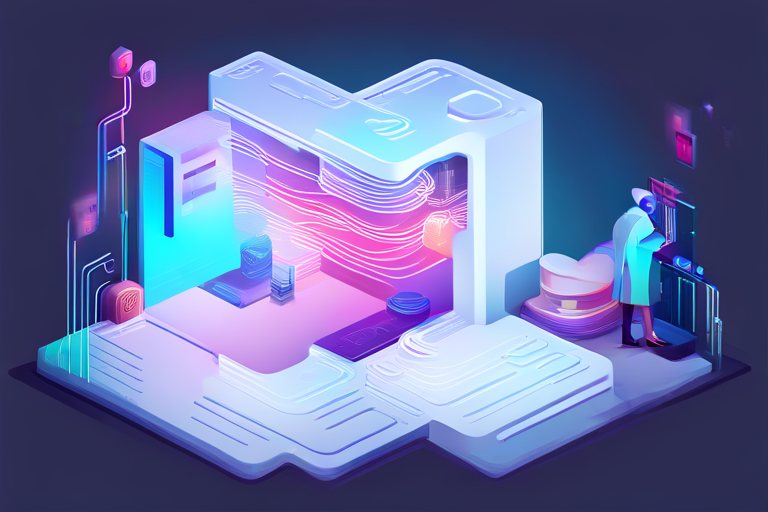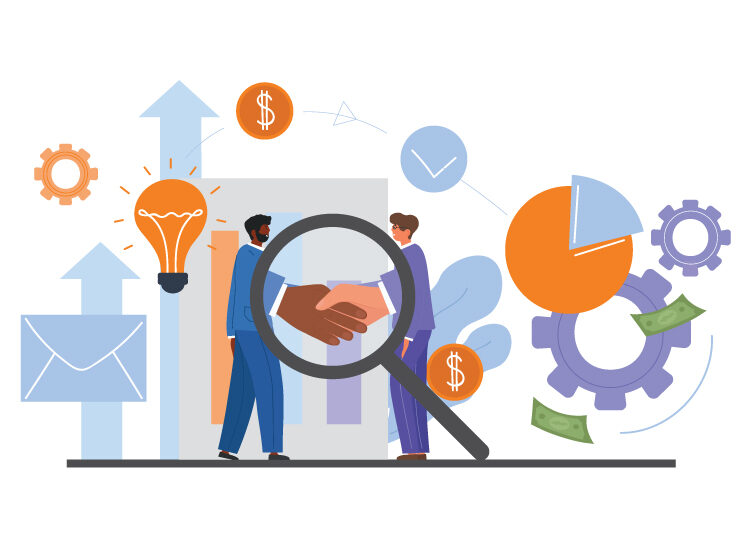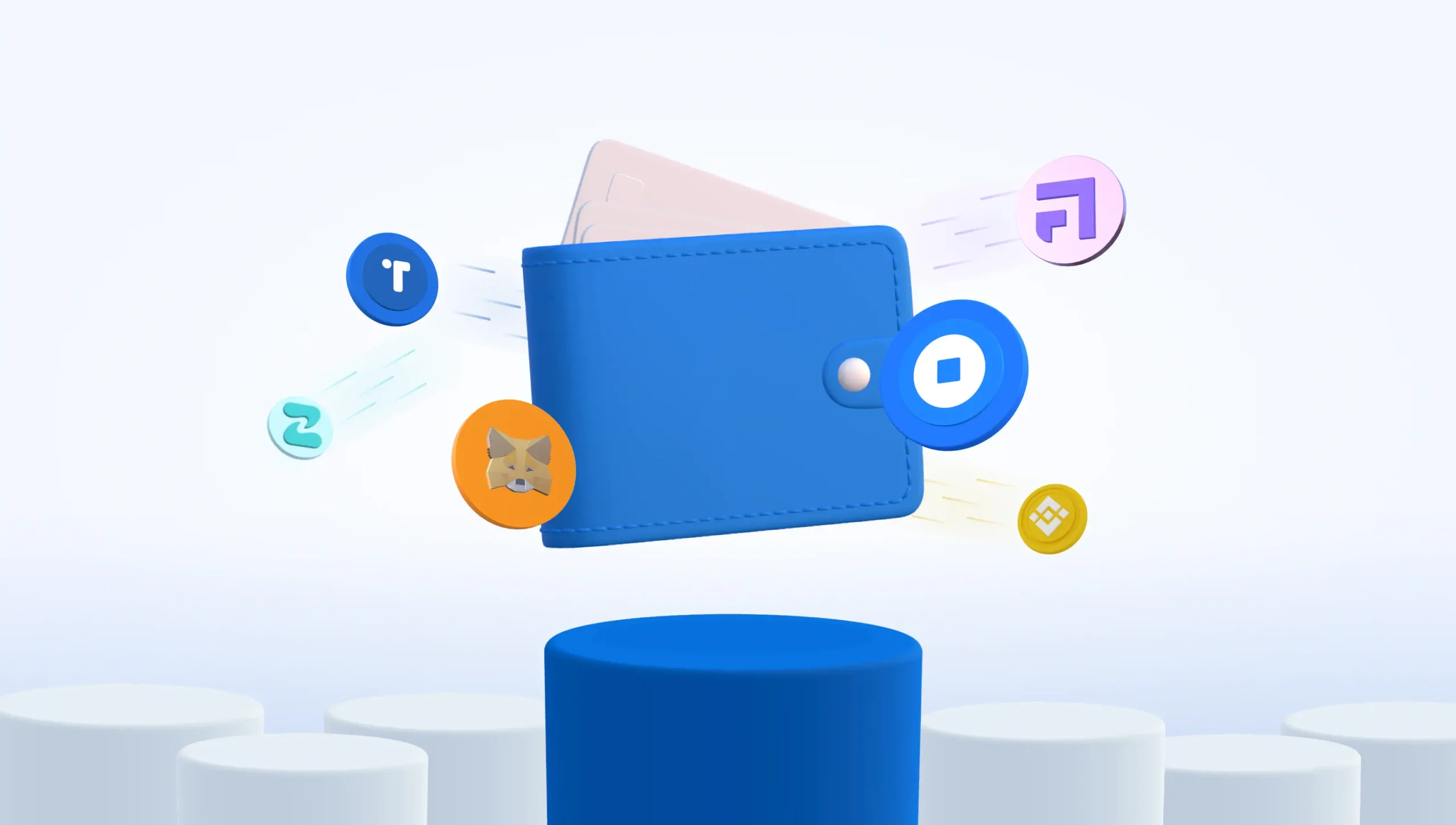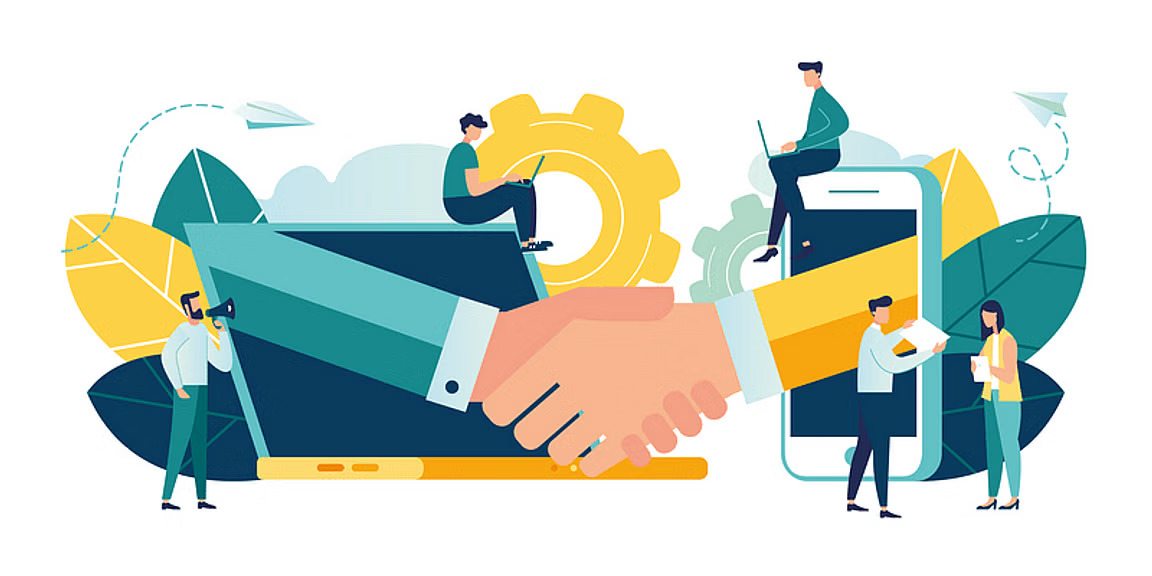Blockchain Revolution: Safekeeping Educational Data in the Digital Age
Have you heard? Blockchain and educational data security are shaking hands to turn the tide on data breaches. You trust me to keep it real, and here it is: schools are targets for cyber thugs. They want data – your data. But blockchain’s like a digital Fort Knox for your records. Gone are the days when grades and diplomas could be messed with. With blockchain, every bit of your academic life is locked down tight. Now, let’s dive into how this tech fortress stands guard over your achievements, because you deserve to have your hard work protected.
Embracing Blockchain for Robust Educational Data Security
The Impact of Distributed Ledger Technology in Safeguarding Academic Information
Blockchain steps up as a hero in school data safety. This tech acts like a digital ledger. Each piece of data adds up like blocks in a chain. It’s tough for hackers to change stuff once it’s in the chain. This ledger doesn’t sit on just one computer either. It spreads out across many, guarding against crashes and hacks. Schools dig this as student info stays safe.
Data safety in schools is key. Using blockchain, they can trust the safety of grades, homework, and more. When I put blockchain to work in education, it was a game changer. Suddenly, schools had a stronghold against threats. They could also share records without fear. Students could trust their achievements stood firm.
Using blockchain in schools means no more lost or changed records by those up to no good. Plus, transferring grades or proof of graduation gets easier and safer. Imagine moving to another school and your records fly through a safe digital path. That’s blockchain at work. Schools love this tech as they know it keeps their records safe and sound.
Role of Cryptography and Encryption in Maintaining Student Data Privacy
Now let’s chat about keeping secrets in student data. Cryptography scrambles data so only the chosen few can read it. It’s like writing a note in secret code. Blockchain uses this trick to lock up each block of data. When schools use this, only the right person can unlock the student’s data.
Encryption uses complex math to turn data into a puzzle. Think of locking your diary with a math problem only you can solve. That’s how blockchain guards each student’s info. It turns their personal details into tough puzzles. This makes sure only those who should see a student’s data, can.
Schools say yes to cryptography and encryption through blockchain. They know it’s a strong lock on their info. Student details like grades, health records, and personal info must stay private. Blockchain helps by making these a tough crack for any snoops.
Every time I’ve pushed for blockchain in a school, they breathe easier. They’ve got a guard dog on their data. From homework to health forms, it all gets the padlock treatment. This tech puts the lock on classroom doors in the digital world.
With blockchain, each bit of student data becomes a locked safe. The key turns only for those who should see it. It means parents, teachers, and students can rest easy. Their private info stays that way. Safe. Secret. And locked up tight. This way, schools can focus on teaching, without fear of data spills.
Implementing Immutable Solutions to Academic Record-Keeping
How Tamper-Proof Education Records Counteract Fraud
Kids need to trust that their school records are safe. That’s where blockchain comes in. It stores data in blocks that are tough to change. When we use blockchain for privacy protection, students can relax. No one can mess with their info.
Schools deal with lots of personal details. Keeping this safe is a big deal. Blockchain helps by making sure each piece of data stays put. Once it’s in the system, it’s like writing with a pen. Erasing is not an option. It’s solid.
When securing student records, blockchain is like a strongbox that’s always locked. Only those who should see them, can. This beats older ways that could let sneaks change grades or personal details.
Imagine a world where fake diplomas don’t work. That’s what blockchain can do. It checks that students really finished their studies. So, no cheating. Jobs can trust the papers they see. Everyone knows they’re real.
Cryptography in educational data adds a secret code. This code scrambles the info so only certain people can read it. It hands back control to the owner of the data. No more fear of snoopers.
So, security is top-notch with blockchain. It fights back against tricks and thieves in schools. Everyone wants fairness. Blockchain helps keep it that way.
The Advantages of Digital Credentials Verified by Blockchain
Digital badges are cool. They show what you know and can do. When a blockchain stamps it for approval, it’s even cooler. It’s a green light that says, “Yes, this person earned it for real.”
Blockchain for securing online course data is a game-changer. It seals the deal on your hard work. Think of a toy safe. Now, instead of toys, it’s your course badges. And this safe doesn’t open unless you say so.
There’s a fancy name for this: digital credentials verified by blockchain. What it means is simple. You did the work, you get the badge, and no one can say otherwise. Employers love it, too. They click, see your badge, and know it’s the truth.
Your identity stays yours with blockchain records for accreditation. Schools can share your wins without mixing things up. It’s your report card, safe and sound, with no mix-ups.
Blockchain for secure exams keeps tests tight. No unwanted peeks, no lies. Just your brainpower and a fair score.
These solutions are like superheroes for student data. They swoop in, lock it down, and make sure it stays right. That’s peace of mind for students, schools, and anyone hiring.
Blockchain touches the future of learning. It makes school safer, smarter, and much fairer. That’s a big win for everyone. School becomes a place where you learn and grow, and blockchain keeps the record straight.
Enhancing Educational Processes through Smart Contracts and Decentralized Systems
Streamlining Academic Data Management with Smart Contracts
Imagine classrooms where teachers spend less time on admin work and more on teaching. Smart contracts make that possible. They are like promises in code form, saved on a blockchain. A blockchain is like a digital ledger that is very secure. The smart contract does its set task when certain conditions are met.
Let’s look at grades as an example:
“How can smart contracts improve the grading system?”
With smart contracts, once a teacher inputs a grade, it’s final. No one can change it—not even the teacher. This stops any unfair changes. These contracts also speed up the process. Things like grade reports and transcripts get sorted fast and without errors.
Smart contracts also help when students move schools. Transferring records can take a long time and get confusing. With these digital promises, records move quickly and safely from one school to another. This keeps student data private and safe, making sure it goes only to the right people.
The Shift to Decentralized Student Databases for Enhanced Security
Now, think of a school where each student’s data is locked up tight. A place where it’s hard for hackers to get in and cause trouble. That’s what a decentralized system does. It spreads out the data across many places instead of storing it all in one spot.
“Why is a decentralized system safer for student data?”
Hackers often target systems where all data is kept together. With decentralized databases, there is no single point for them to attack. This makes student data much harder to steal or change.
Using blockchain for privacy protection is a big help. All the student records are on a shared network, but not in one big pile. Each part of the data has its own strong lock. This lock is encryption in student data storage. And just like a puzzle, you need the correct pieces to see the complete picture. That makes data safe.
Students can feel better about their privacy too. They know their school records are safe. Teachers can trust the system to keep grades and personal stuff secure. Schools can make sure they are following the law by protecting this data. Everyone wins.
Blockchain technology in education is changing how we look after academic information. It uses strong security to keep student records safe. One piece at a time, it builds a stronger, smarter school system. It cuts down on cheating and makes sure every student’s hard work is locked in safely. This digital way of doing things is not only smart but absolutely needed in our world today.
Preventing Data Breaches and Ensuring Data Integrity with Blockchain Applications
Strategies for Securing Online Courses and Examinations
In schools, we must keep data safe online. Blockchain helps a lot with this. It’s like a strong, unbreakable lock for your information. When you hear ‘blockchain’, think of blocks of data that are chained together. This makes a secure list that no one can mess with. It’s perfect for keeping records safe and secure.
Why does this matter so much? Well, online learning is huge now. Students take courses and exams from home. We have to make sure no one can break in and steal or change their personal info and scores. Here’s where blockchain shines. It makes online courses and exams super safe.
Firstly, blockchain can check who is taking a test. It does this by using digital IDs on the blockchain. This makes sure the person taking the test is legit. Then, the answers to the test get stored on the blockchain. It’s like locking them in a vault. No one can change the answers once they are inside. This means grades can be trusted.
Lastly, even the course content is safe on blockchain. You can’t mess with the videos, quizzes, or readings. Teachers can rest easy. They know their hard work won’t be stolen or changed.
Verifying Educational Achievements and Preventing Academic Fraud through Blockchain Technology
Now, let’s talk about proving what you’ve learned. Everyone wants credit for their hard work, right? Blockchain makes this easy and trustworthy. When you pass a class or a test, it goes on the blockchain. It’s set in stone—or should I say, set in the chain!
Employers can quickly check your success. They can trust the records because blockchain does not let cheats in. It’s like having a guard who never sleeps. This guard keeps all the fakes away. So, diplomas and certificates that come from a blockchain are the real deal.
Schools love blockchain for this. They hate fraud. Blockchain keeps their name clean by making sure all wins are honest. And it’s not just big schools that use it. Even small classes or courses can rely on blockchain. It’s like having a big, strong friend who makes sure no bully can take your stuff.
In short, blockchain helps a lot in schools. It keeps your work and info very secure. With blockchain, learning online is as safe as in a classroom. It’s a smart way to learn and teach. Plus, we all get to say ‘bye’ to cheats and lies in school. With blockchain, what you see is what you get, and that’s fantastic for everyone.
In this post, we explored how blockchain can make school data safer. We saw how distributed ledger tech keeps academic info secure, and how encryption protects student details. We talked about making records fraud-proof and how digital badges work well on the blockchain.
We also looked at smart contracts and decentralized systems, showing how they make managing school data easier. Plus, we discussed ways to stop data attacks in online courses and exams.
My final thought is simple: Blockchain is a strong tool for educational data. It fixes many security problems and keeps the bad guys out. We should use it more to protect our schools, teachers, and students. It’s time to trust blockchain for a better learning future.
Q&A :
How does blockchain technology enhance security in educational data?
Blockchain technology offers a decentralized and immutable ledger for storing data, which enhances security in educational records by making it difficult for unauthorized parties to alter or forge information. Each record or transaction is encrypted and linked to the previous one, creating an unbreakable chain of data blocks. This inherent design ensures transparency and traceability, reducing the risk of data breaches and unauthorized access to sensitive educational information.
What are the benefits of using blockchain for educational institutions?
The use of blockchain in educational institutions provides numerous benefits, including enhanced data security and integrity, as well as efficient record-keeping and verification processes. It allows for the secure sharing of credentials and achievements, reducing the incidence of diploma fraud. Additionally, blockchain technology can facilitate cross-institutional data transfers, making it easier for students to move between schools and for employers to verify educational backgrounds.
Can blockchain be used to protect student privacy?
Yes, blockchain technology can be used to protect student privacy through encryption and by giving students control over their own data. With blockchain, personal identifying information is not centrally stored, reducing the vulnerability to hacking and data leaks. Smart contracts can be used to grant access to student records on a need-to-know basis, ensuring that only authorized parties can view sensitive data, and only with the student’s consent.
How does blockchain improve the verification process of educational certificates?
Blockchain improves the verification process of educational certificates by creating an unchangeable record of issued diplomas and credentials. Educational institutions can issue digital certificates on the blockchain, which are tamper-evident and easily verifiable. Employers and other schools can instantly confirm the authenticity of a candidate’s claimed educational background without needing to contact the issuing institution, thus streamlining the verification process.
What potential challenges might institutions face when implementing blockchain for data security?
Institutions might face several challenges when implementing blockchain for data security, including the need for technological infrastructure upgrades, the complexity of integrating blockchain with existing systems, and ensuring all stakeholders have the necessary digital literacy. There are also potential regulatory and privacy concerns that need to be addressed, alongside the cost and scalability issues associated with maintaining and managing a blockchain system.

RELATED POSTS
The Unique Characteristics of Blockchain Technology – A Guide to Its Power and Potential
The unique characteristics of blockchain...
Cow DAO base L2 chain launch: Faster, cheaper and more scalable blockchain
The Cow DAO Base L2...
MiCA: A new regulation or a restraint on Crypto?
Starting from December 30, the...
Staying Ahead: Essential Crypto Market News Updates
Sự biến động không ngừng...
Purple Bitcoin: A new currency in the digital world
Purple Bitcoin is a unique...
Plenty Airdrop: Chance to get free PLY tokens
The Plenty Airdrop program distributes...
Network3 Airdrop – Potential Profits in the Future
Network3 Airdrop offers potential profit...
Exploring the Use of blockchain technology in different sectors
The use of blockchain technology...
A Night of Luxury – DePIN Alliance Yacht Party
The Depin Alliance Yacht Party...
Bitcoin Charlotte and 3 Expected Growth Signals
Bitcoin Charlotte is not just...
Pi Network Officially Lists on OKX Exchange on February 20: New Opportunities for Pi Holders?
Pi Network Officially Lists on...
Infrared Finance: Leading PoL Staking on Berachain
Infrared Finance has emerged as...
Inflation is down why isnt crypto rallying today?
Inflation is down why isnt...
What is ACA Coin? Learn about Acala Network Token
ACA Coin is a vital...
SEC to Host Second Crypto Meeting on April 25
The U.S. Securities and Exchange...
Zircuit Airdrop – Breakthrough Potential for Early Investors!
Zircuit Airdrop is not just...